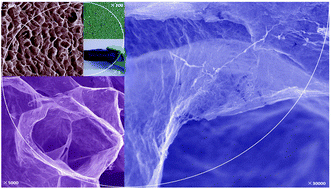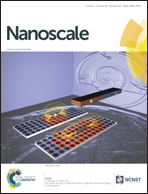Synergistic effects from graphene and carbon nanotubes endow ordered hierarchical structure foams with a combination of compressibility, super-elasticity and stability and potential application as pressure sensors†
Abstract
Nanostructured carbon material based three-dimensional porous architectures have been increasingly developed for various applications, e.g. sensors, elastomer conductors, and energy storage devices. Maintaining architectures with good mechanical performance, including elasticity, load-bearing capacity, fatigue resistance and mechanical stability, is prerequisite for realizing these functions. Though graphene and CNT offer opportunities as nanoscale building blocks, it still remains a great challenge to achieve good mechanical performance in their microarchitectures because of the need to precisely control the structure at different scales. Herein, we fabricate a hierarchical honeycomb-like structured hybrid foam based on both graphene and CNT. The resulting materials possess excellent properties of combined high specific strength, elasticity and mechanical stability, which cannot be achieved in neat CNT and graphene foams. The improved mechanical properties are attributed to the synergistic-effect-induced highly organized, multi-scaled hierarchical architectures. Moreover, with their excellent electrical conductivity, we demonstrated that the hybrid foams could be used as pressure sensors in the fields related to artificial skin.


 Please wait while we load your content...
Please wait while we load your content...